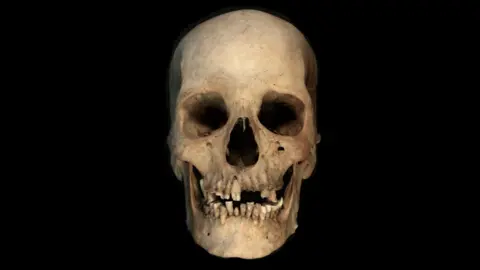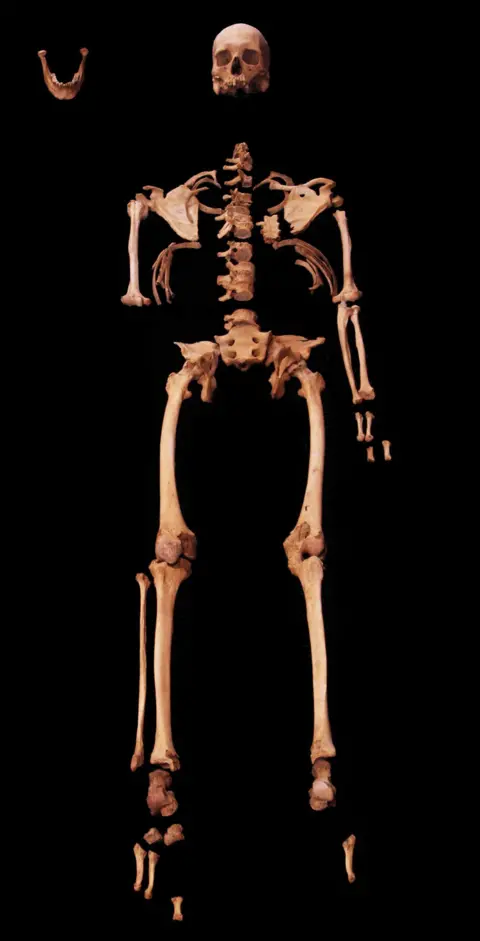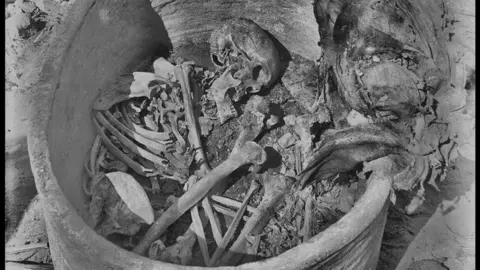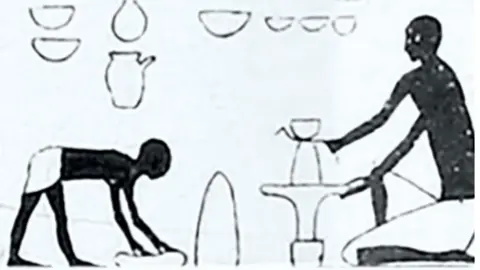
 Liverpool University John Morse. nature
Liverpool University John Morse. natureThe DNA test on a man who lived 4,500 years ago in the Nile Valley shed light on the emergence of ancient Egyptian civilization.
An analysis of his skeleton shows that he was 60 years old and may have been working as a porcelain, but also that his fifth DNA came from ancestors living 1500 km in other great civilization at that time, in Mesopotamia or modern Iraq.
This is the first biological evidence of the ties between the two and can help explain how Egypt has turned from a different group of agricultural societies into one of the strongest civilizations on the face of the earth.
The results give a new weight that writing and agriculture arose through the exchange of people and ideas between these two ancient worlds.
 Liverpool University John Morse/Nature
Liverpool University John Morse/NatureThe main researcher, Professor Pontus Scoglond at the Francis Kreik Institute in London, told BBC News that the ability to extract and read DNA from ancient bones can shed light on events and individuals from the past, allowing historical and black historical facts to explode with technical details.
“If we get more DNA information and put it alongside what we know of the archaeological, cultural and written information we have since that time, it will be very exciting,” he said.
Our understanding of our past is partially extracted from written records, which are often calculated by the wealthy and the strong, often for the rich and strong.
Biological methods of historians and scientists give a new tool to see history through the eyes of ordinary people.
The DNA was taken from a bone in an internal ear of the remains of a man buried in Nuwayrat, a village 265 km south of Cairo.
He died 4500 and 4800 years ago, and it is a transformative moment in the emergence of Egypt and countries of Mesopotamia. Archaeological evidence indicated that the two regions may have been in contact at least 10,000 years ago when people in Mesopotamia began to cultivate animals and intermittently, which leads to the emergence of an agricultural society.
Many scientists believe that this social and technological revolution affected similar developments in ancient Egypt – but there has been no direct evidence of communication, yet.
 Garstang Museum/Liverpool University/Nature
Garstang Museum/Liverpool University/NatureThis is the first clear evidence of the great migration of people, and thus information between the two centers of civilization at that time, said Adeline Morez Jacobs, who analyzed the remains as part of a doctorate at Liverpool University John Morris.
“You have two regions that develop the first writing systems, so archaeologists believe that they are in contact and exchange of ideas. Now we have evidence that they were.
“We hope that samples of future DNA will expand from ancient Egypt when this movement began from West Asia and its extent.”
The man was buried in a ceramic bowl in a cut grave alongside the hill. His burial had occurred before artificial embalming was the usual practice, which may have helped maintain his DNA.
By investigating chemicals in his teeth, the research team was able to distinguish what he ate, and from this, he decided that he may have arisen in Egypt.
But the story of the scientific investigations does not stop there.
 Metropolitan Museum of Art
Metropolitan Museum of ArtProfessor Joel Irish of the University of Liverpool John Morsi made a detailed analysis of the skeleton to build a picture of a man as an individual.
He said: “What I wanted to do is knowing who this man was, let’s learn as much as possible, what was his age, and his position, what he did for the sake of living and trying to allocate everything instead of treating him as a cold sample.”
Bone structure indicated that the man was between 45 and 65 years old, although the evidence of arthritis indicates the upper end of the scale. It was slightly more than 5 feet and 2 inches, until then was short.
The Irish professor was also able to prove that it may have been Potter. The bone was expanded in the form of a hook at the back of its skull, indicating that it looked down a lot. The size of the seat bones is expanded, indicating that it sat on the solid surfaces for long periods. His arms showed evidence of a wide and forth wide movement, and there were signs of his arms where his muscles grew, indicating that he used to raise heavy things.
“This indicates that he did his tail. He has worked throughout his life,” American -born academic BBC News told BBC News.
Dr. Linus Gerland Flink explained that due to the huge stroke of luck, this skeleton was available to study and reveal its historical secrets.
“It was dug in 1902 and donated the Museum of the World Liverpool, where they survived the bombings during the raid that destroyed most of the human remains in their group. We were now able to tell part of the individual’s story, and said that some of his predecessors came from the fertile crescent, while highlighting the mixture between the groups at this time,” he said.
It was the new search It was published in the Nature magazine.
https://ichef.bbci.co.uk/news/1024/branded_news/99f0/live/86b579b0-5683-11f0-b5c5-012c5796682d.jpg
2025-07-02 15:01:00














